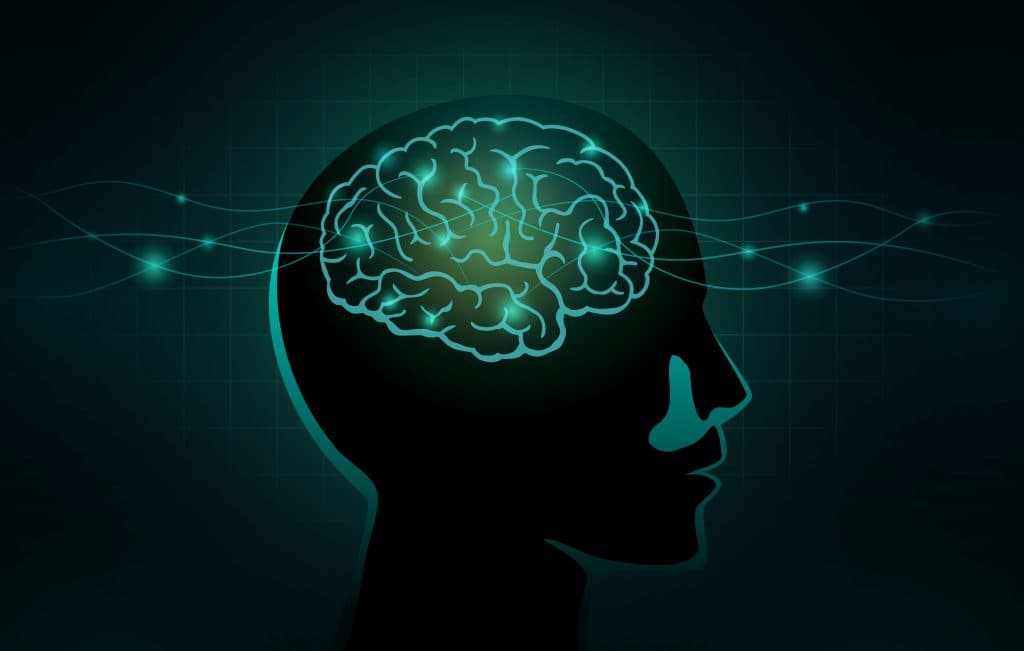The Challenges and Benefits of IoT in Healthcare
Explore the challenges and benefits of IoT in healthcare. Learn how IoT technology revolutionizes patient care and tackles industry hurdles.
The integration of IoT (Internet of Things) technology in healthcare has sparked significant interest and debate in recent years. This innovative approach holds the promise of revolutionizing healthcare delivery, but it also comes with its fair share of challenges. In this article, we will explore both the hurdles and advantages of implementing IoT in the healthcare industry.
Introduction to IoT in Healthcare
What is IoT?
The Internet of Things (IoT) refers to a network of interconnected devices. These devices collect and exchange data over the internet without human intervention. In the healthcare sector, IoT includes various devices. These include wearable sensors, medical equipment and monitoring systems. They are aimed at improving patient care and operational efficiency.
Brief Overview of Healthcare IoT
Healthcare IoT involves the integration of technology into medical devices and systems. It aims to monitor patients remotely, streamline healthcare processes and enhance decision-making. From wearable fitness trackers to advanced medical imaging equipment, IoT solutions offer innovative ways to deliver personalized care. They also aim to improve health outcomes.
Challenges of Implementing IoT in Healthcare
Security Concerns
Security is a big concern when it comes to implementing IoT in healthcare. Furthermore, with the proliferation of connected devices collecting and transmitting sensitive patient data, the risk of cybersecurity threats such as data breaches, hacking and malware attacks, increases significantly. Consequently, healthcare organizations must prioritize cybersecurity measures to protect patient information and prevent unauthorized access to medical devices and networks. For instance, implementing solid encryption protocols, access controls and intrusion detection systems can safeguard data integrity and confidentiality.
Data Privacy Issues
Data privacy is another major challenge in healthcare IoT. As a result, patients become increasingly concerned about how their data is being used and shared. Healthcare providers must adhere to strict regulatory standards. Examples include the Health Insurance Portability and Accountability Act (HIPAA). This ensures patient confidentiality and privacy rights are protected. Implementing transparent data governance policies is necessary. So is establishing informed consent mechanisms. Secure data storage practices are also crucial. They help maintain patient trust and compliance with regulatory requirements.
Interoperability Challenges
Interoperability is a significant barrier to IoT adoption in healthcare. It involves different systems exchanging and interpreting data seamlessly. The healthcare ecosystem comprises diverse devices, software platforms and EHR systems. They often operate in silos and use proprietary protocols. Integrating these systems for data sharing is complex and resource-intensive. Standardization efforts like Fast Healthcare Interoperability Resources (FHIR) aim to establish common data exchange formats. They also aim to create interoperability frameworks. These efforts facilitate seamless communication and collaboration among healthcare stakeholders.
Device Integration and Management
Managing and integrating a multitude of IoT devices across healthcare facilities pose operational challenges for IT teams. Each device may have unique connectivity requirements, firmware updates and maintenance schedules, making device provisioning and management a logistical headache. As a result, healthcare organizations must invest in robust device management platforms and infrastructure to streamline device deployment, configuration and monitoring processes. This involves ensuring compatibility with existing IT systems, implementing remote management capabilities, and establishing protocols for device lifecycle management to minimize downtime and ensure optimal performance.
Regulatory Compliance
Navigating the regulatory landscape is a complex challenge for healthcare organizations implementing IoT solutions. In addition to HIPAA, healthcare providers must comply with various regulations and industry standards. These govern medical device safety, data privacy and cybersecurity. Regulatory requirements may vary depending on geographical location, type of healthcare organization and IoT application nature. Healthcare organizations must stay updated on evolving regulatory requirements. They should conduct risk assessments and implement compliance measures. These measures help mitigate legal and financial liabilities associated with non-compliance.
Cost and Resource Constraints
Implementing IoT in healthcare involves significant upfront costs and resource investments. From acquiring and deploying IoT devices to upgrading infrastructure and training personnel, the financial burden can be substantial for healthcare organizations, particularly smaller providers with limited budgets and IT capabilities.
Moreover, maintaining and supporting IoT systems over their lifecycle requires ongoing investments in maintenance, upgrades and technical support services. Therefore, healthcare organizations must carefully evaluate the return on investment (ROI) and total cost of ownership (TCO) of IoT implementations to ensure sustainability and maximize value for patients and stakeholders.
Cultural and Organizational Change
Introducing IoT technology into healthcare environments requires cultural and organizational change to embrace innovation and adapt to new ways of working. Consequently, healthcare professionals may resist adopting IoT solutions due to concerns about job displacement, workflow disruptions and loss of autonomy. Effective change management strategies are essential to address this challenge. These strategies include training programs, stakeholder engagement and leadership support. They help overcome resistance and foster a culture of innovation and continuous improvement. Healthcare organizations can unlock the full potential of IoT by implementing these strategies. This can improve patient care, enhance operational efficiency and drive innovation in the healthcare industry.
Benefits of IoT in Healthcare
Remote Patient Monitoring
IoT technology enables remote patient monitoring. This allows healthcare providers to track patients’ vital signs and health metrics outside of traditional clinical settings. This capability is particularly valuable for patients with chronic conditions, elderly individuals and those recovering from surgery or illness. For instance, wearable sensors and home monitoring devices can continuously monitor parameters such as heart rate, blood pressure, blood glucose levels and oxygen saturation. They provide real-time data to healthcare providers for early detection of health issues and timely intervention. By enabling proactive care, remote patient monitoring reduces the need for frequent hospital visits. It also minimizes healthcare costs and improves patient outcomes by preventing complications and reducing hospital readmissions.
Improved Efficiency and Accuracy
IoT technology streamlines healthcare processes and enhances efficiency by automating data collection, analysis, and decision-making. For example, connected medical devices and smart sensors automate vital sign measurements. They also handle medication dispensing and patient data recording. This reduces the burden on healthcare professionals and minimizes the risk of human error.
Additionally, IoT-enabled predictive analytics and machine learning algorithms analyze vast amounts of patient data. They identify patterns, trends and anomalies. This enables healthcare providers to make more informed clinical decisions and personalized treatment plans. IoT improves workflow efficiency and clinical decision-making. It enhances patient safety, reduces medical errors and optimizes resource utilization in healthcare settings.
Enhanced Patient Outcomes
IoT empowers patients to actively participate in their own care, leading to better health outcomes and patient engagement. For instance, wearable health trackers, mobile health apps and telehealth platforms enable individuals to monitor their health metrics. They also track medication adherence and communicate with healthcare providers remotely.
This promotes self-management and proactive healthcare behaviors. IoT provides patients with access to real-time health data and personalized health insights. It encourages lifestyle modifications, early intervention and adherence to treatment plans. This results in improved patient satisfaction, quality of life and disease management outcomes. Furthermore, remote monitoring and telemedicine services extend access to healthcare services to underserved populations. This includes rural communities and individuals with limited mobility. It improves health equity and reduces healthcare disparities.
Predictive and Preventive Healthcare
IoT enables predictive and preventive healthcare by continuously monitoring patient health data. It identifies potential health risks and deviations from normal patterns. Through advanced analytics and machine learning algorithms, IoT systems analyze historical patient data, environmental factors and social determinants of health. This predicts and prevents adverse health events like disease exacerbations, hospitalizations and complications.
For instance, IoT-enabled predictive analytics can identify patients at high risk of developing chronic conditions such as diabetes or heart disease. It intervenes early with targeted interventions, lifestyle modifications, and preventive care measures to mitigate risks and improve health outcomes. Shifting from reactive to proactive care, IoT supports population health management initiatives. It reduces healthcare costs and promotes health and wellness across diverse patient populations.
Seamless Care Coordination and Collaboration
IoT facilitates seamless care coordination and collaboration among healthcare providers, patients, and caregivers. It does this by enabling secure data sharing and communication across different care settings and stakeholders. For instance, interoperable IoT devices and electronic health record (EHR) systems allow healthcare teams to access and exchange patient data in real-time. This facilitates collaborative decision-making, care planning and transitions of care.
Furthermore, IoT-enabled telemedicine platforms and remote consultation tools enable multidisciplinary care teams to collaborate virtually. This happens regardless of geographical distance, improving access to specialized expertise and reducing delays in care delivery. By breaking down silos and fostering interdisciplinary collaboration, IoT enhances care coordination. It also reduces medical errors and improves patient satisfaction and continuity of care across the healthcare continuum.
Conclusion
In conclusion, while the challenges of implementing IoT in healthcare are significant, the benefits are undeniable. By addressing security concerns, ensuring data privacy, and overcoming interoperability challenges, healthcare organizations can harness the power of IoT to revolutionize patient care, enhance operational efficiency and drive innovation in the industry. With continued technological advancements and strategic investments, the future of healthcare IoT is bright, offering new possibilities for improving health outcomes and transforming healthcare delivery worldwide.
At 8Seneca, we specialize in providing tailored B2B services, focusing particularly on IT outsourcing solutions. If you need IT outsourcing services, feel free to contact us. Additionally, we’re actively looking for eager interns to join our team. Check out our recruitment center for details on available positions
Related Articles

Dec 09, 2025
Read more
Everyone Is Training a ‘Proxy Model’: The 2026 Tech Trend Nobody Is Talking About
Discover why AI proxy models are set to reshape tech in 2026 and how companies are quietly racing to use them.

Dec 02, 2025
Read more
How Bot-to-Bot Commerce Is Quietly Changing Retail
Bot-to-bot commerce is changing retail, letting software negotiate deals and optimize pricing across digital marketplaces.

Nov 25, 2025
Read more
Why Aging Tech Puts Everyone at Risk
Aging infrastructure risk leaves networks exposed. Learn how to secure legacy systems and prevent threats.

Nov 18, 2025
Read more
The Future of Gaming: How AI and Technology Are Changing Play
Explore the future of gaming, from AI-driven worlds to VR and cloud tech, and see how players and developers will thrive in the next decade.

Nov 11, 2025
Read more
Navigating the AI Boom How Developers Can Thrive Amid the Hype
The AI boom is reshaping tech. Discover how developers can seize opportunities and stay ahead of the hype.

Oct 28, 2025
Read more
How AI Is Quietly Rewiring the Human Brain
AI and the human brain may be changing. Studies show frequent AI use can reshape how people think and remember.
